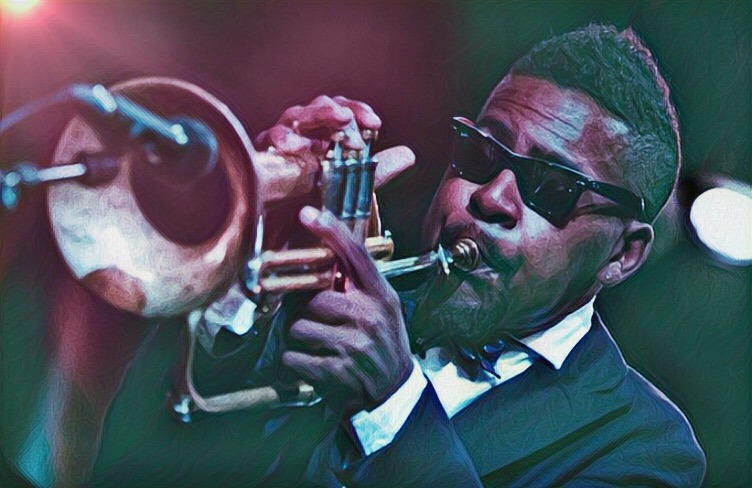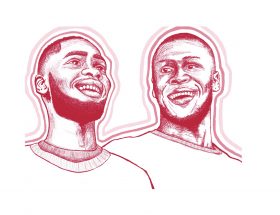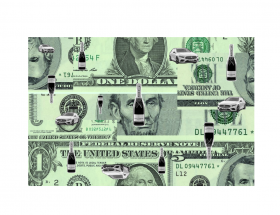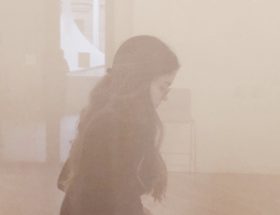On November 2nd 2018, revolutionary musician Roy Hargrove passed away at the tragically young age of 49.
While to his loyal followers, collaborators, and fans, his death feels as though it has left some gaping hole in the world of jazz – some tear in the pathway of jazz’s modernisation and widespread revitalisation – it is within Hargrove’s rich legacy of skilful innovation that has instead, truly left behind an abundance of beauty, and the fullness of a life well lived. Even in death, Hargrove will trumpet life into the music he created and morphed, as well as the music who’s existence has been precedented by his daring and imagination.
Hargrove was, most simply put, a visionary.
A proponent of musical pluralism and renowned musical polymath, Hargrove defined his career through his combining of the various elements of funk, R&B, hip-hop, and jazz, venturing to new depths in terms of genre and sound. It is this creativity that has contributed to keeping the very heart of jazz beating, even whilst revolutionising its sound and boundaries.
Born in Waco, Texas, Hargrove took lessons on trumpet, looked up to saxophonist David “Fathead” Newman, and was mentored by Wynton Marsalis. In 1988, Hargrove attended Boston’s Berklee College of Music for a year before transferring to the New School in New York. From there, his career took flight with his first solo album, Diamond in the Rough, being released in 1990 and his first Grammy, for his Afro-Cuban jazz album Habana, being won in 1998.
The 2000s marked Hargrove’s venture from warm and light bebop jazz melodies into his neo-soul and hip-hop work with the musical collective Soulquarians. His contribution to D’Angelo’s Voodoo, Erykah Badu’s Mama’s Gun, and Common’s Like Water for Chocolate, marked not only the renaissance of Neo-Soul but a shift in the relationship of jazz with more modern genres into something that wasn’t solely reliant on sampling. Rather it was a seemingly meant-to-be combination of sound engaged in genuine musical dialogue. His presence and work allowed songs that were otherwise encompassed by their own genre to thrive creatively. They were bolstered by Hargrove’s inclusion of unique grooves and the stylistic echo of jazz, ultimately becoming innovative songs, elevated from their original standing point of being something heard-before to being impressively composed of various musical fabrics.
In 2003, fueled by his Soulquarian work, Hargrove began his group called the RH Factor. In his work with the RH Factor, Hargrove cemented himself as a force to be reckoned with in terms of song-writing and producing, as well as being a previously known fantastic instrumentalist. The band produced the brilliant albums Hard Groove and Distractions, characterized by their innate playfulness in genre, blending jazz, soul, funk, R&B, and hip-hop into something entirely new that simultaneously felt intrinsic to some tier of musical history.
It is Hargrove’s collaborations that have laid the foundation for extremely current jazz-crossover work and genre-bending in R&B, hip-hop, and soul. His legacy belts on in the work of musicians such as Noname, Phony Ppl, Kamasi Washington, Ravyn Lenae, Nicholas Payton, the Internet, Domo Genesis, Robert Glasper, Thundercat, Anderson.Paak, and more.
Perhaps what is most moving about Roy Hargrove however, is that in the face of his talent and immense significance in the world of music, he saw himself as an equal piece to a larger collective when making music. Despite his individuality, he could blend into a group and support first and foremost, the music he was making.
Hargrove’s life, his attitude, his absolute and immortal importance – they’re all summarised best by his own words:
“Let the music speak for itself”.
WORKS BY/INCLUDING ROY HARGROVE THAT DESERVE A SECOND LISTEN.
Ruby My Dear – Roy Hargrove
A Place – The RH Factor
Joy is Sorrow Unmasked – Roy Hargrove
Cold Blooded – Common
Dream Traveler – Roy Hargrove
Crazy Race – The RH Factor
Green Eyes – Erykah Badu
The Joint – The RH Factor
Brown Sugar – D’Angelo




